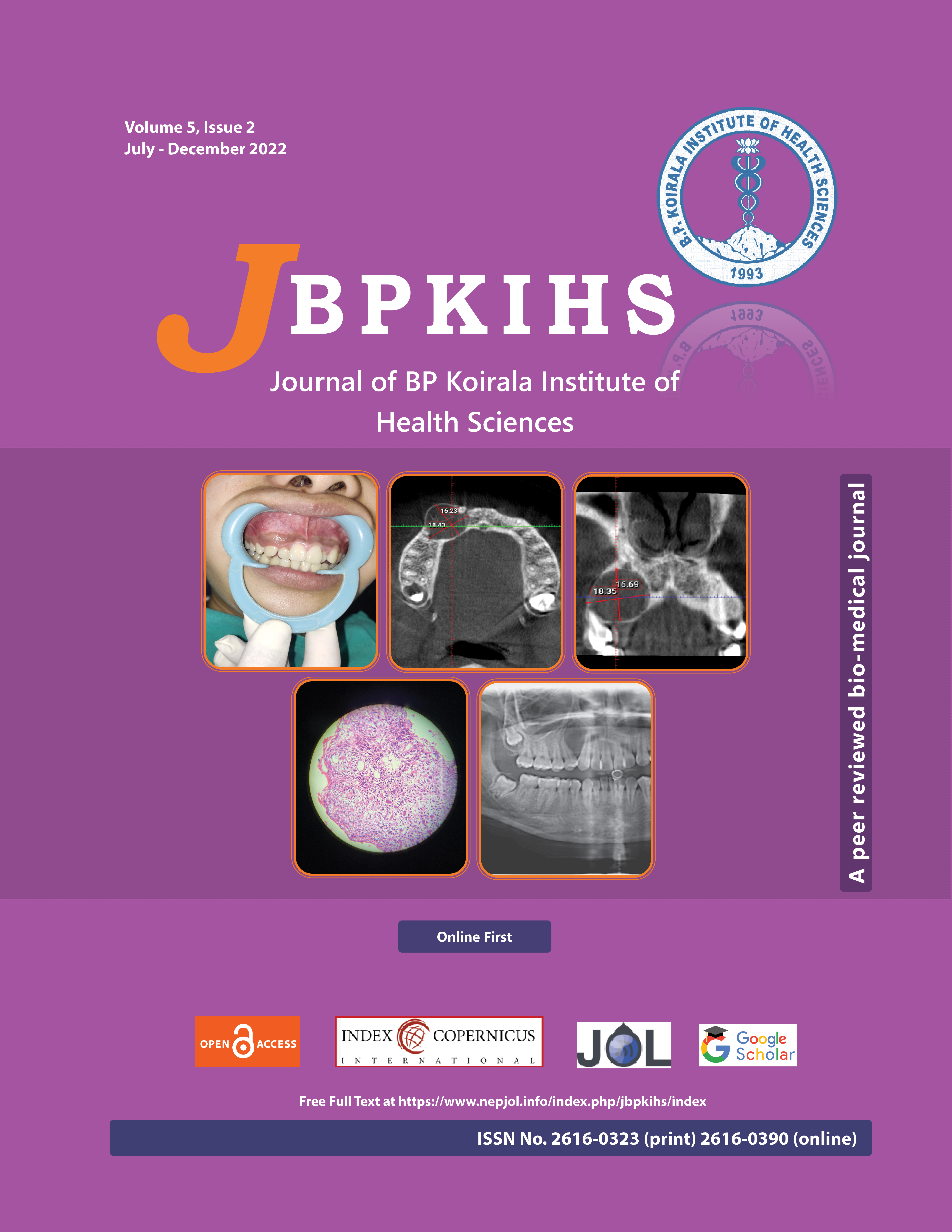Outcome of Patients with Emergency Revisits at a Tertiary Care Hospital of Eastern Nepal: an Observational Study
DOI:
https://doi.org/10.3126/jbpkihs.v5i2.49064Keywords:
Emergency, Outcome, Nepal, RevisitAbstract
Background: A return visit to the emergency department by the same patient within a stipulated time frame has implications in quality of care provided as well as overcrowding. We aimed to find out the outcome and describe the characteristics of the patients presenting with revisits to emergency.
Methods: This hospital based observational study recruited all consecutive cases with revisits within 30 days to emergency department from February to August 2019 after ethical approval. Clinical presentation and outcome were noted.
Results: Out of 21,215 discharges from the emergency during the study period, 176 patients had revisits (0.829%). The mean age (SD, 95% CI) was 49.74 (18.77, 46 to 52) years with male: female ratio of 1.02. The mean number of days (SD, 95% CI) for revisit was 4.94 (4.92, 4 to 5). Deterioration in triage category was seen in 33.5%; 11.9% had an ‘improved triage category’. High acuity triage score during revisit was 38%. Common revisit diagnosis was chronic kidney disease (35.8%) and infections (30.1%). Revisit diagnostic category change was seen in 20%, with mortality of 6.25%. Patients requiring admission returned within a mean of 4 days (SD, 95% CI = 3.6, 3.3 to 4.9) compared to 6 days (5.6, 4.5 to 6.8) for non-admitted patients. Early revisits (p = 0.040), lower systolic blood pressure at index visit (p = 0.001) and revisit (p = 0.002) were associated with admissions.
Conclusion: Revisits were common in the earlier days of the initial discharge from the emergency. Chronic problems tended to revisit more.
Downloads
Downloads
Published
How to Cite
Issue
Section
License
Copyright (c) 2022 Journal of BP Koirala Institute of Health Sciences

This work is licensed under a Creative Commons Attribution-NonCommercial-NoDerivatives 4.0 International License.
This license enables reusers to copy and distribute the material in any medium or format in unadapted form only, for noncommercial purposes only, and only so long as attribution is given to the creator.




